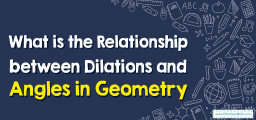How to Transform Linear Functions
Transforming linear functions refers to the process of changing the shape or position of a linear function, while still preserving its linearity. This can be done by applying certain operations, such as translation, reflection, dilation, and rotation, to the function.
[include_netrun_products_block from-products="product/6-south-carolina-sc-ready-grade-3-math-practice-tests/" product-list-class="bundle-products float-left" product-item-class="float-left" product-item-image-container-class="p-0 float-left" product-item-image-container-size="col-2" product-item-image-container-custom-style="" product-item-container-size="" product-item-add-to-cart-class="btn-accent btn-purchase-ajax" product-item-button-custom-url="{url}/?ajax-add-to-cart={id}" product-item-button-custom-url-if-not-salable="{productUrl} product-item-container-class="" product-item-element-order="image,title,purchase,price" product-item-title-size="" product-item-title-wrapper-size="col-10" product-item-title-tag="h3" product-item-title-class="mt-0" product-item-title-wrapper-class="float-left pr-0" product-item-price-size="" product-item-purchase-size="" product-item-purchase-wrapper-size="" product-item-price-wrapper-class="pr-0 float-left" product-item-price-wrapper-size="col-10" product-item-read-more-text="" product-item-add-to-cart-text="" product-item-add-to-cart-custom-attribute="title='Purchase this book with single click'" product-item-thumbnail-size="290-380" show-details="false" show-excerpt="false" paginate="false" lazy-load="true"]

Related Topics
- How to Transform Quadratic Equations
- Transformation on the Coordinate Plane: Dilation
- Transformation on the Coordinate Plane: Rotation
- Transformation on the Coordinate Plane: Reflection
- Transformation: Rotations, Reflections, and Translations
Step-by-step to Transform Linear Functions
Here are some examples of how to transform linear functions:
- Translation: To translate a linear function up or down, you can add or subtract a constant from the \(y\)-coordinate. For example, \(y = 2x + 1\) can be translated up \(2\) units by adding \(2\) to the \(y\)-coordinate, resulting in \(y = 2x + 3\).
- Reflection: To reflect a linear function across the \(x\)-axis, you can negate the \(y\)-coordinate. For example, \(y = 2x + 1\) can be reflected across the \(x\)-axis by negating the \(y\)-coordinate, resulting in \(y = -2x – 1\).
- Dilation: To dilate a linear function, you can multiply the \(x\)-coordinate by a constant factor. For example, \(y = 2x + 1\) can be dilated by a factor of \(2\) by multiplying the \(x\)-coordinate by \(2\), resulting in \(y = 4x + 1\).
- Rotation: To rotate a linear function, you can change the slope of the function. For example, \(y = 2x + 1\) can be rotated \(90\) degrees by making the slope \(-\frac{1}{2}\), resulting in \(y = -\frac{1}{2}x + 1\)
Note: It’s important to notice that transformations does not change the type of function, it only changes the shape and position of the function.
Related to This Article
More math articles
- How to Unlock the Secrets of Algebra 1: Mastering the Basics with the ‘Grade 9 Algebra 1 for Beginners’ Comprehensive Solution Guide
- The Crucial Role of Mathematics in Engineering Education
- 8th Grade MEAP Math Worksheets: FREE & Printable
- Writing down Variable Expressions Involving Two Operations
- Your Coach’s Playbook: How to Understand Percent of Change
- What is the Relationship between Dilations and Angles in Geometry
- How to Graph the Sine Function?
- The Rules of Integral: Complex Subject Made Easy
- 4th Grade SBAC Math Worksheets: FREE & Printable
- Additive and multiplicative relationships



























What people say about "How to Transform Linear Functions - Effortless Math: We Help Students Learn to LOVE Mathematics"?
No one replied yet.